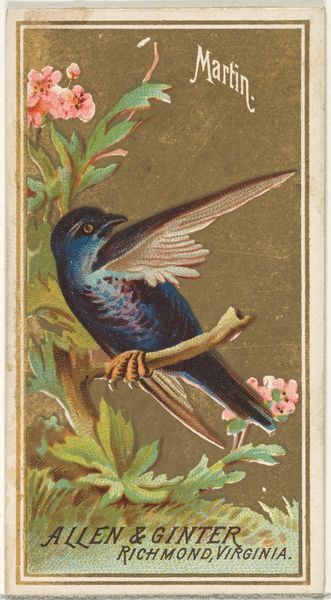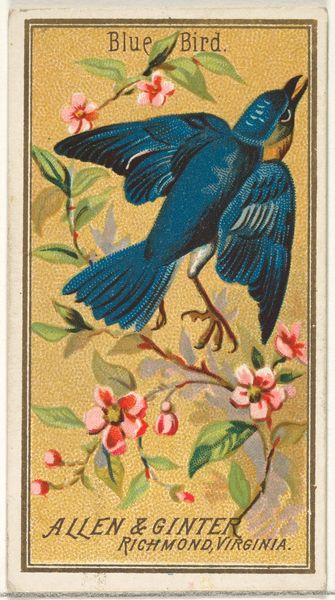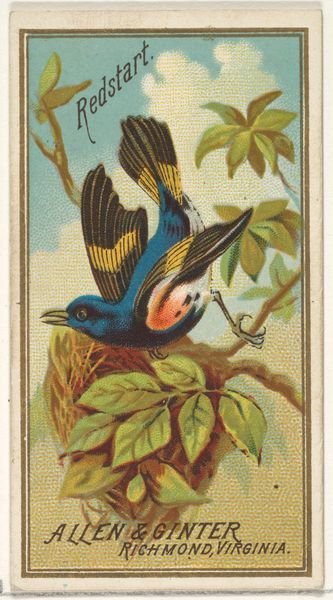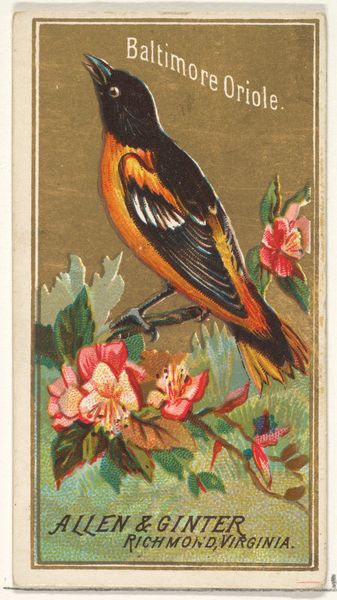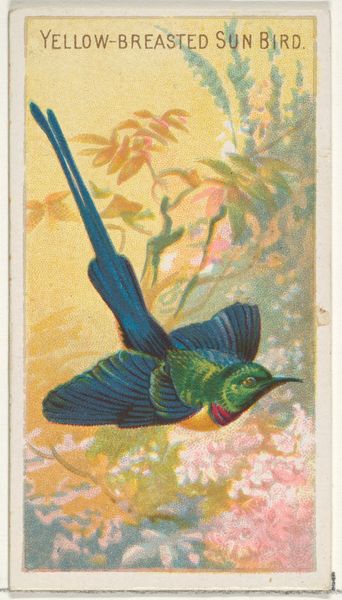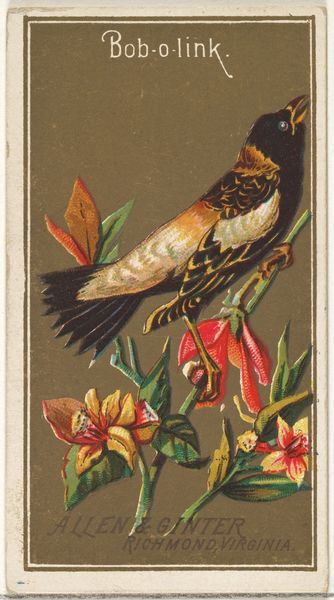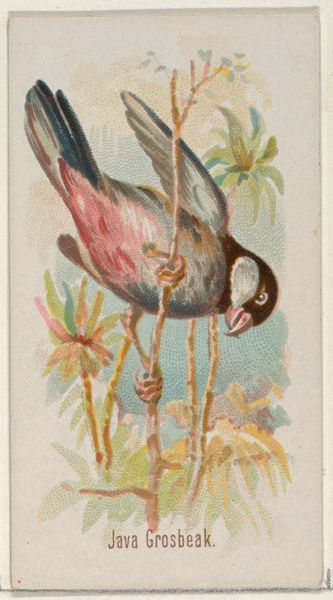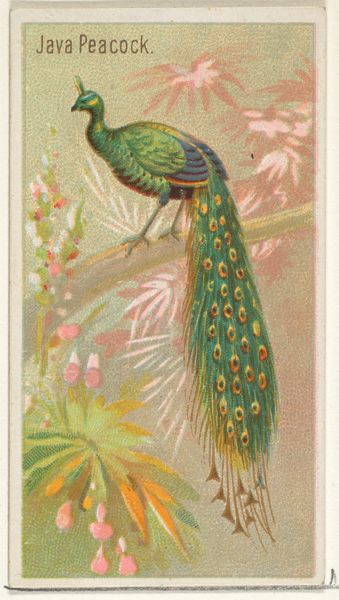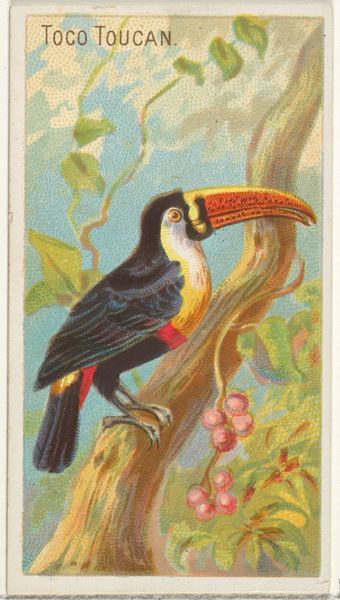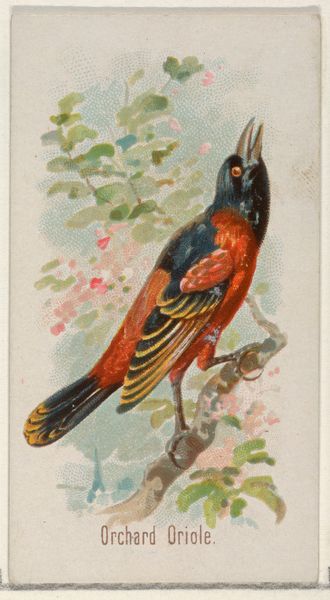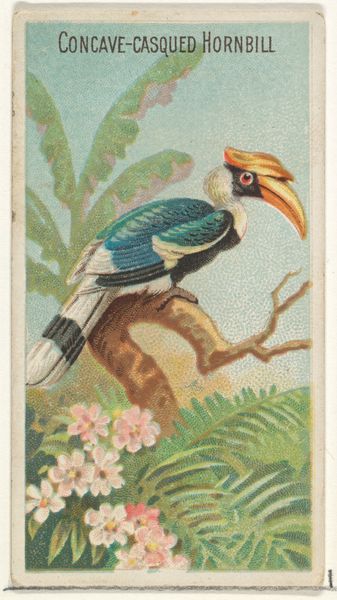
Blue Jay, from the Birds of America series (N4) for Allen & Ginter Cigarettes Brands 1888
0:00
0:00
drawing, print, watercolor
#
drawing
# print
#
impressionism
#
bird
#
watercolor
#
watercolour illustration
#
watercolor
Dimensions: Sheet: 2 3/4 x 1 1/2 in. (7 x 3.8 cm)
Copyright: Public Domain
Editor: Here we have "Blue Jay," a watercolor print created in 1888 for Allen & Ginter Cigarettes. It has such a bright, cheerful quality about it, with its bold colors and depiction of nature. What stands out to you in this piece? Curator: It's fascinating how this image, ostensibly a celebration of nature, was used to promote a product linked to health issues. Think about the cultural context: the late 19th century saw a surge in mass-produced consumer goods, including cigarettes. Companies used these 'trade cards' depicting birds, flowers, or famous people, to attract customers. What does it say about society's relationship with nature, when images of beauty are commodified to sell addictive substances? Editor: So, the beauty of the Blue Jay becomes a tool for marketing cigarettes. I guess I hadn't considered the ethical implications of that. It definitely changes my perception. Curator: Consider the political role of imagery as well. Bird images, at the time, evoked a sense of national pride, particularly in North America. Audubon's Birds of America was influential in cultivating this sentiment. Allen & Ginter leverages that association, subtly linking smoking to notions of American identity and the natural world. Editor: It is disturbing to realize such beautiful watercolor was used in advertisement with underlying motives to hide the product's harm. Curator: It makes you wonder about the relationship between art, commerce, and public health, doesn't it? Also, who were Allen & Ginter and where were they located? Their location could also factor into what they are pushing. Editor: That's an important point! So, it's not just about aesthetics, but also about understanding the broader societal influences. I'll definitely look at things differently now! Curator: Precisely. Analyzing the power structures at play reveals the complexities behind seemingly simple images, offering rich understanding about socio-political contexts and shaping our perception of the public role of art.
Comments
No comments
Be the first to comment and join the conversation on the ultimate creative platform.

